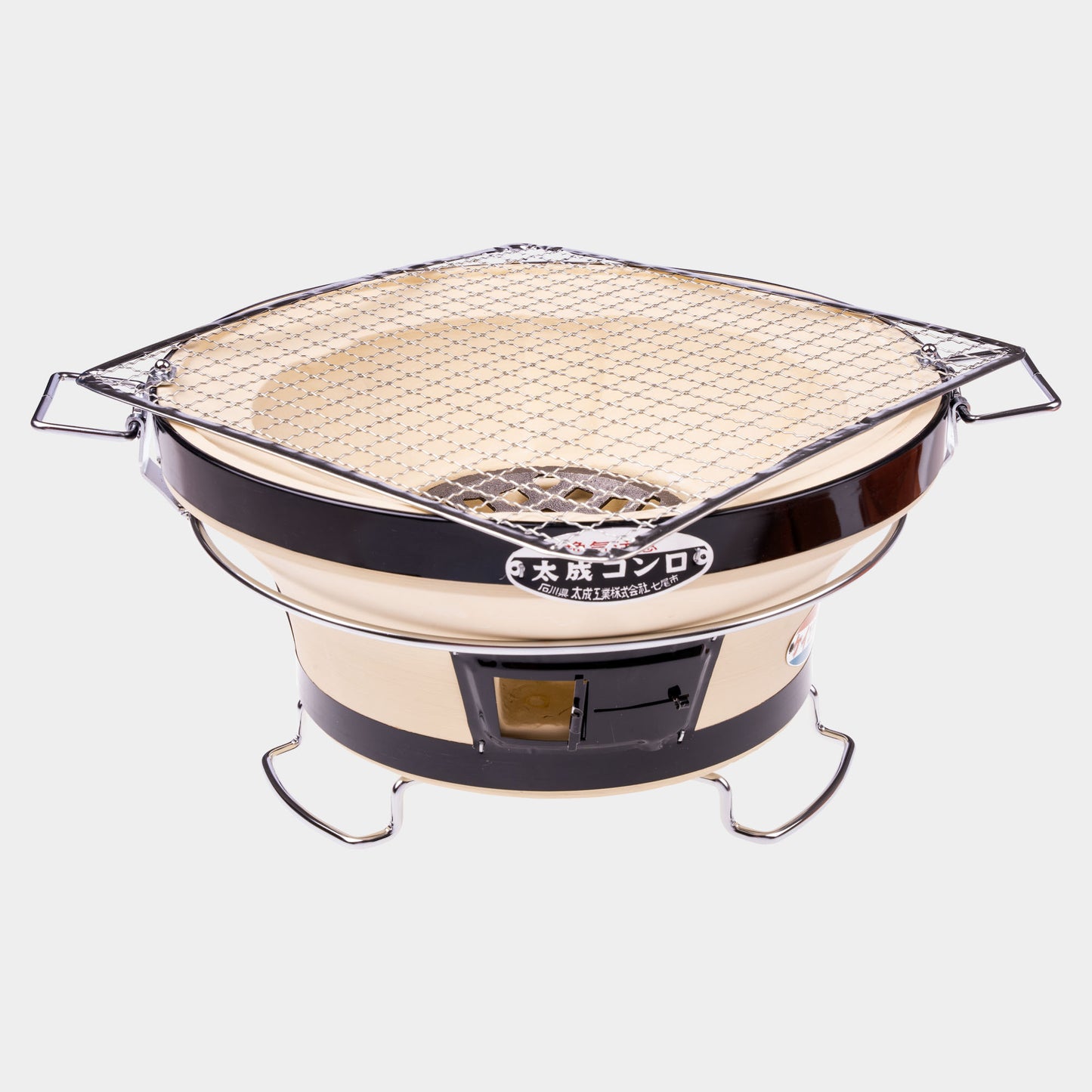This site is protected by hCaptcha and the hCaptcha Privacy Policy and Terms of Service apply.
Pairs well with...Japanese Konro Barbecue Grill
If you’ve ever visited a Japanese Yakitori restaurant (not to mention several Michelin-starred restaurants) you will quite likely have enjoyed food cooked on a Konro – also known as a Shichirin or Hibachi – grill.
Such grills, though very simple in design, are prized for their ability to reach and maintain temperatures of up to 750°C. This is down to two key factors: using the correct fuel (binchotan charcoal, which is resusable between 2 to 3 times) and the diatomaceous earth/clay that forms the body of the grill, holding and reflecting the heat back to the centre of the grill.
The Konro grill makes it easy to try your hand at Japanese grilling at home.
- To get started, open the ventilation grill completely to allow maximum airflow and ignite your charcoal. Some people find it easier to light the charcoal in a separate chimney lighter and add it once it has got going: see what works for you.
- Do not use a blower on charcoal inside the grate – the charcoal may heat unevenly and too quickly and the resulting hotspots could damage the stove.
- In Japan you may find these grills used inside restaurants, assuming a suitable level of ventilation. We are rather more cautious: to avoid carbon monoxide poisoning we recommend using the Konro outside only.
- The less airflow to the charcoal via the ventilation door the more carbon monoxide is produced, so please be mindful of this.
- As mentioned, the stove will get very hot all the way around: use a wooden plank beneath and ensure you are on a non-flammable surface.
- Do not pour water on to the clay part of the grill or wash it.
- The removable metal grill is washable in hot, soapy water. Allow to cool completely before cleaning.
- Do not move the stove while it is hot. If you must handle the grill be sure to use natural fibre gloves: rubber or synthetic gloves may melt to your hands!
- Inspect the stove regularly for damage and do not use it if it has developed a fault. However, the diatomaceous earth will develops small cracks and hairline fissures. This is normal and the oven remains safe to use.
- Allow to cool fully, and then a bit more to be on the safe side, before storing it away after use.
- 4kg
- 130 x 260mm
- Made in Japan
Recently added










